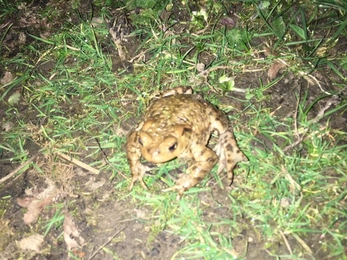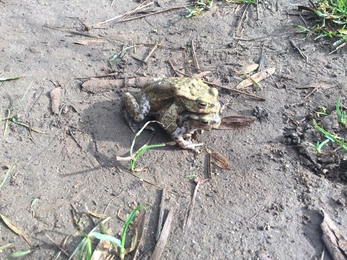Weekly wild news from our reserves - 9 April
Barren strawberry at Combs Wood - Alex Lack
The team at Carlton Marshes were extremely excited to see this huge white-tailed eagle passing over the reserve this weekend. This image of the eagle and buzzard together clearly shows how massive and impressive the eagle is! Our largest bird of prey, the white-tailed eagle is sometimes known as the 'sea eagle', and preys on fish, mammals and small birds. It was persecuted to extinction in the UK, but reintroduced from Norway during the 1970s. The white-tailed eagle has broad wings and a white, wedge-shaped tail and a pale head with a yellow bill.
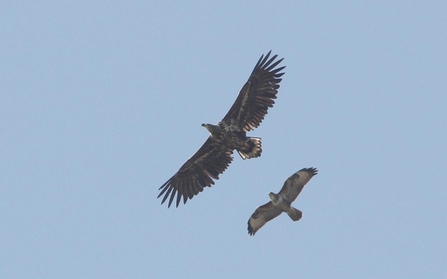
White-tailed eagle and buzzard at Carlton Marshes – Andrew Easton
Firebug frenzy
These stunning firebugs were seen by Ben Calvesbert at Rendlesham Forest this week. Firebugs emerge to mate at this time of year and are usually found in groups at the base of lime trees, with the lime tree seeds being their main food source.
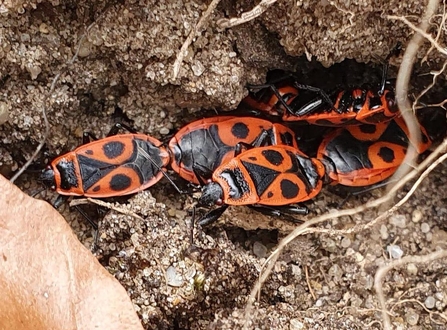
Firebugs at Rendlesham Forest - Ben Calvesbert
Combs Wood bursting into life
Alex Lack, West Suffolk Woodlands Assistant Warden, captured these gorgeous scenes of the ancient woodland bursting into life with spring flowers and new leaves this week.
Springtime laughter
The green woodpecker is the largest of the three woodpeckers that breed in Suffolk. They have an undulating flight and a loud, laughing call as you will hear in this short video clip taken at Arger Fen & Spouse’s Vale. It has a heavy-looking body, short tail and a strong, long bill. It is green on its upperparts with a paler belly, bright yellow rump and red on the top of its head.
Busy bedroom badger
Joe Bell-Tye, West Suffolk Reserves Warden, noticed the fresh excavations from a local badger sett this week, likely to be either the spoil from new excavations or cleaning and maintenance of existing chambers. Joe said, ‘Badgers live underground in a network of tunnels and chambers called a ‘sett’. Badger setts vary from occasionally used ‘outliers’, which often have single entranced tunnels, to vast, ancient underground complexes with multiple entrances. These larger setts can extend from 20 to 100 metres or more, with some of the largest having more than 50 entrances! Such elaborate setts can take many years to create and are passed down through generations. These are the family homes, used, maintained and enlarged at will by generations of the same social group’.
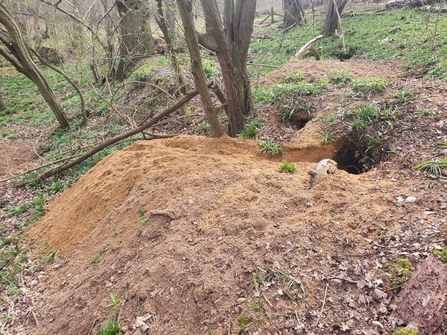
Badger excavations at Arger Fen – Joe Bell-Tye
Perch-off!
Could this couple of perch-shy birds be the first mating pair of Kingfisher at Lackford Lakes Nature Reserve this year? The tension is unbearable!
Toads on the move
Toads have been making their way to their breeding ponds recently, with several being seen at Gunton Meadow and Newbourne Springs. Common toads tend to breed in larger, deeper ponds than common frogs, but still frequent gardens. They hibernate over winter, often under log piles, stones or even in old flowerpots.
Flowering fritillaries
Snake’s head fritillaries are starting to flower at our meadow reserves, like this one at Martins’ Meadows. Their nodding, pink-and-purple-chequered flowers are said to resemble a snake, hence the name. Once common in the UK, the snakes head fritillary has declined with the loss of meadow habitat.
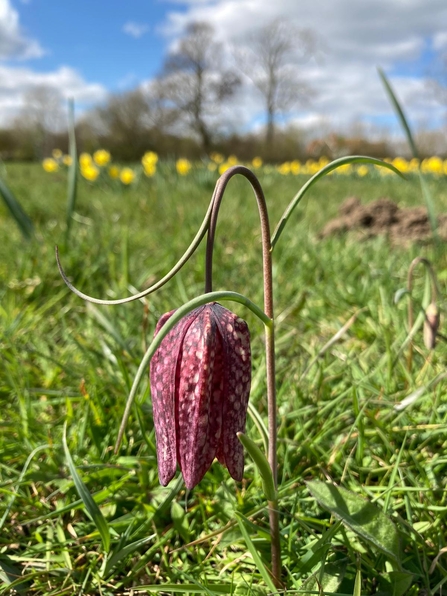
Snake’s head fritillary at Martins’ Meadow – Ben Calvesbert
Tadpoles hatch out
The frogspawn we saw last week at Gunton Meadow is now a mass of writhing hungry tadpoles!






